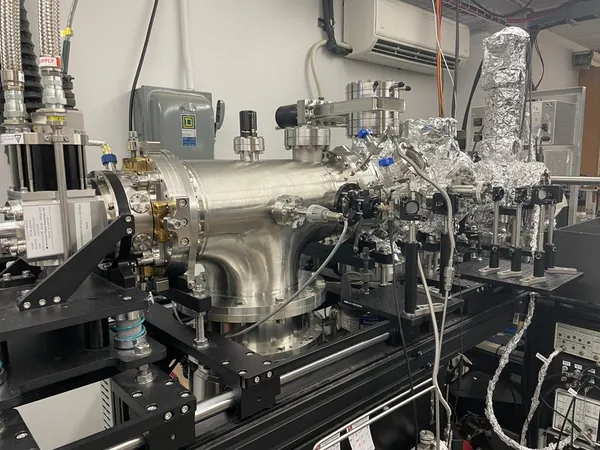
Revolutionizing Energy: UBC Researchers Unveil Hydrogen's Frictionless Superfluidity
2025-05-22
Author: Liam
Discovering the Unimaginable: Frictionless Hydrogen
Imagine a liquid that flows endlessly without any resistance, appearing to defy the very laws of physics. Researchers at the University of British Columbia (UBC) have achieved the extraordinary by witnessing this rare phenomenon, known as superfluidity, in a molecular system for the first time ever.
Superfluidity, a fascinating state of matter, allows a liquid to flow without friction, meaning that objects submerged within it can glide freely without any resistance. Until recently, this intriguing behavior had only been documented in helium at temperatures approaching absolute zero.
Breaking New Ground: Hydrogen's Potential for Superfluidity
Now, UBC’s groundbreaking research offers compelling evidence that hydrogen can also transition into a superfluid state, marking an important new chapter in our understanding of quantum matter. The theory of hydrogen superfluidity dates back to the 1970s, but has remained primarily theoretical until now.
Dr. Takamasa Momose, a chemistry professor at UBC and the lead investigator, expressed excitement about the team's two-decade journey to uncover the superfluid properties of hydrogen. He noted the challenge in analyzing their data, emphasizing the minuscule effect they were attempting to identify.
Innovative Techniques: How Researchers Made a Historic Discovery
In their experiments, the researchers introduced a single methane molecule into a cluster of hydrogen molecules, chilled to near absolute zero in helium nanodroplets. By utilizing laser radiation to spin the methane, they were able to observe its rotations, akin to placing a spinning object in a liquid to measure resistance without disturbing the fluid.
Momose further explained that methane was the optimal choice due to its spherical shape and absence of a dipole moment, which allowed for a clearer analysis of hydrogen's superfluid behavior.
Unveiling the Quantum Magic of Hydrogen
If the surrounding hydrogen had behaved like a traditional liquid, it would have impeded the methane's spinning. Yet, the researchers found that in the superfluid state, methane spun freely — just as they had hypothesized.
The precision required to measure such minute rotational changes was formidable. The team meticulously controlled the number of hydrogen molecules in each cluster, repeating their experiments under highly sensitive conditions. Any shift in cluster size could dramatically affect the outcomes.
Real-World Implications: Superfluid Hydrogen as Clean Energy
The ramifications of this research extend beyond the laboratory. Hydrogen is already a prime candidate for clean energy solutions, and Canada boasts abundant, low-cost hydrogen resources alongside significant clean electricity from nuclear, wind, and solar sources.
If superfluid hydrogen can be harnessed on a larger scale, it may lead to innovative, energy-efficient methods for hydrogen storage and transport — a huge leap toward a more sustainable energy future.
A Bright Future for Superfluidity Research
Although this research remains in its early stages, it lays the foundation for exciting developments in sustainability and energy solutions. With applications that stretch into the realms of physical chemistry and physics, students at UBC are encouraged to delve into the endless possibilities presented by this fascinating world of superfluidity.









 Brasil (PT)
Brasil (PT)
 Canada (EN)
Canada (EN)
 Chile (ES)
Chile (ES)
 Česko (CS)
Česko (CS)
 대한민국 (KO)
대한민국 (KO)
 España (ES)
España (ES)
 France (FR)
France (FR)
 Hong Kong (EN)
Hong Kong (EN)
 Italia (IT)
Italia (IT)
 日本 (JA)
日本 (JA)
 Magyarország (HU)
Magyarország (HU)
 Norge (NO)
Norge (NO)
 Polska (PL)
Polska (PL)
 Schweiz (DE)
Schweiz (DE)
 Singapore (EN)
Singapore (EN)
 Sverige (SV)
Sverige (SV)
 Suomi (FI)
Suomi (FI)
 Türkiye (TR)
Türkiye (TR)
 الإمارات العربية المتحدة (AR)
الإمارات العربية المتحدة (AR)